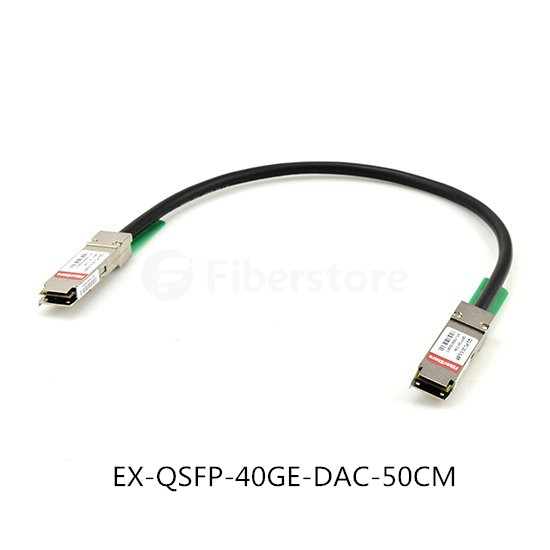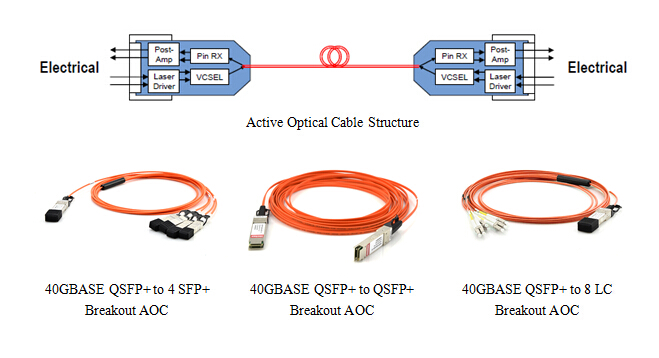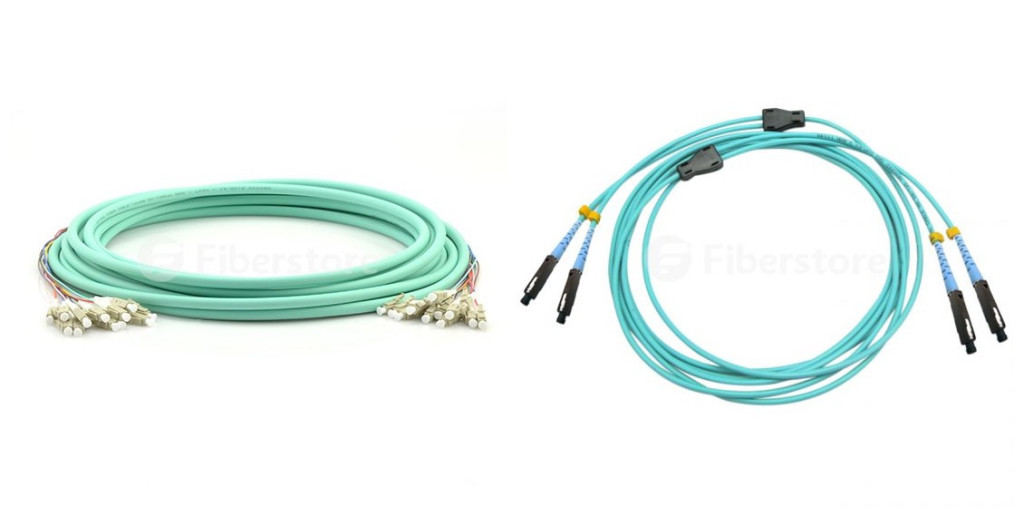Dirrect attach cable (DAC), is a cost effective and proven solution for interconnecting networking applications. It can provide inexpensive and reliable connections using either copper cables or fiber cables. What is DAC? How copper DAC and fiber DAC differ from each other? Here is what you need to know about DACs.
A direct attach cable is a fixed assembly that is purchased at a given length, with the connector modules permanently terminated to each end of the cable to connect switches to routers or servers. DACs are much cheaper than the regular optics, since the “transceivers” on both ends of DACs are not real optics and their components are without optical lasers. They are preferable choice for their low cost, low power consumption and high performances. DAC are made of the two kinds of cable materials: copper and optical fiber. They are respectively called direct attach copper cable and active optical cable.
Direct attach copper cable is interchangeable and hot swappable with fiber optic modules. It is designed in either active or passive versions. It supports such multiple protocols as Gigabit & 10G Ethernet, 8G FC, FCoE and InfiniBand. Direct attach copper cable is a cost effective solution over optical transceivers and and cables for short reach applications. It can support higher data rates than traditional copper interfaces—from 4Gbps to 10Gbps per channel. The defect of direct attach copper cable is that it is heavy and bulky, making it difficult to be managed. Furthermore, due to the nature of electrical signals, direct attach copper cable is vulnerable to the effects of electromagnetic interference (EMI), such as undesirable responses, degradation, or complete system failure. Fiberstore offers various QSFP+ direct attach copper cables with different lengths for your 40G applications. For example, lengths of Juniper EX-QSFP-40GE-DAC-50CM, QFX-QSFP-DAC-1M and QFX-QSFP-DAC-3M compatible QSFP+ to QSFP+ passive copper cables are respectively 0.5m, 1m, and 3m.

Active optical cable (AOC) is an alternative to optical transceivers, eliminating the separable interface between transceiver module and optical cable. It meets Small Form-factor (SFF) standards. Compaired to direct attach copper cable, AOC weighs less and can support longer transmission distance. It is immune to electromagnetic energy since the optical fiber is dielectric (not able to conduct electric current). What’s more, it is an alternative to optical transceivers and it can eliminate the separable interface between transceiver module and optical cable. AOC has no EMI. However, it costs more than copper cable.

Direct attach cables are widely applied in storage area network, data center, and high-performance computing connectivity. They suppoet high speed I/O applications in storage, networking and telecom markets. And they can also be sused in witches, servers, routers, network interface cards (NICs), and Host Bus Adapters (HBAs). There are many different kinds of DACs, they all have their specific applicayions. For example, 40G AOC is commonly used for short-range multi-lane data communication and interconnect applications.
Fiberstore offers a variety of high speed interconnect DAC assemblies including 10G SFP+ cables, 40G QSFP+ cables, and 120G CXP cables to satisfy the demands from 10G to 100G interconnection. Direct attach cables provided by Fiberstore can be customized to meet different requirements. And we also offer all kinds of high quality QSFP+ modules branded by many famous companies, like Brocade QSFP+, Dell QSFP+, Juniper QSFP+, Finisar QSFP+, Intel QSFP+, etc. You can buy from us with confidence.

